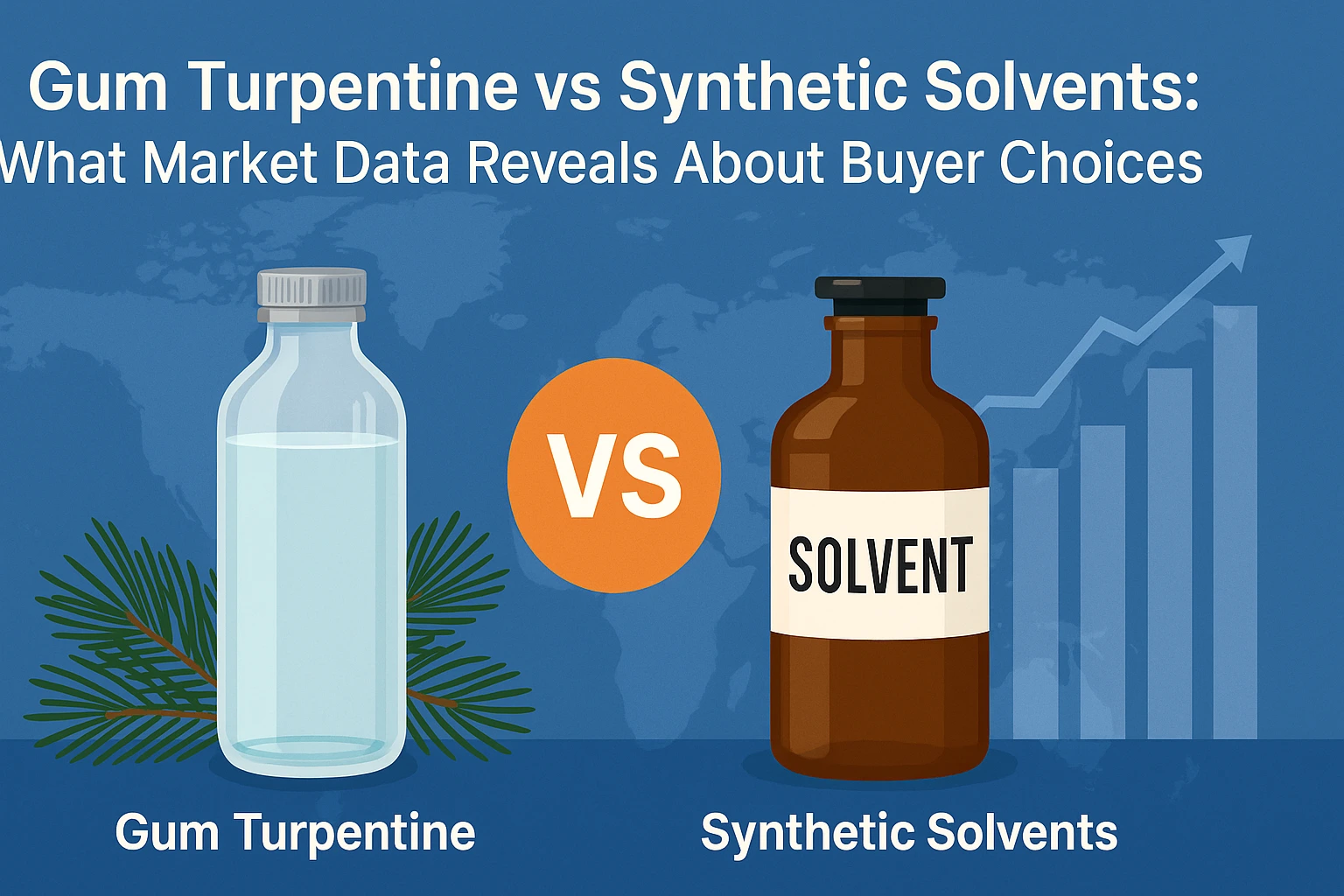Introduction: The Solvent Dilemma for Today’s Buyers
As sustainability and green chemistry take the spotlight, industrial and specialty buyers face tough decisions: stick with tried-and-true synthetic solvents or embrace natural, renewable gum turpentine? Once considered a niche, gum turpentine now commands global attention as government policies, consumer demand, and environmental costs shift the market landscape.
2. Gum Turpentine—Nature’s Sustainable Solution
Gum turpentine oil, a renewable extract from pine resin, is seeing steady market growth: globally valued at $1.1–1.3B in 2025 and projected to double by 2035. Its environmental credentials are central: it’s biodegradable, low-toxicity, and eligible for “natural”/bio-based product lines. Buyers in Europe, North America, and APAC are investing in high-purity, odor-neutral, and pharma-grade turpentine to meet green chemistry trends in adhesives, coatings, and cosmetics. Expansion of bio-based product regulations underpins this growth.
3. Synthetic Solvents—Pricing, Performance & Volume
Synthetic solvents offer advantages—large-scale production, year-round supply, and cost control from petrochemical feedstocks. For industries prioritizing price, volume, and process consistency, synthetics remain attractive—especially as volatility and regional shortages sometimes hit the supply of natural gums. Advances in synthetic solvent tech also mean some products can meet stricter VOC/emission rules, improving their green profile.
4. What the Latest Market Data Says about Buyer Preference
Recent market reports show a clear split: although synthetics have bigger total market share, demand for gum turpentine is rising 5–6% CAGR, outpacing overall solvent growth. Key buyers—especially in fragrances, specialty coatings, and pharma—are switching to turpentine-based options due to regulatory compliance, brand strategy, and consumer demand for natural ingredients. In Asia, industrial buyers gravitate towards whichever offers price stability and supply reliability. Cost, purity, and long-term contracts dominate decision making.
5. Science Break: Comparative Performance & Safety
Studies in coatings, dental chemistry, and cleaning show gum turpentine matches or exceeds the solvency of many synthetics for organic resins, oils, and pigments. However, some synthetics dissolve stubborn substances faster, while turpentine is increasingly chosen for applications requiring bio-based, non-toxic, or consumer-safe labels. Modern purification allows turpentine to meet high quality and regulation standards, reducing negative impact while delivering competitive performance.
6. Sourcing & Supply Chain Outlook: Choosing the Right Partner
As market scrutiny intensifies, buyers are urged to:
-
Seek suppliers with transparent, sustainable sourcing.
-
Validate quality through certification (REACH, ISO, food/pharma grade).
-
Diversify sourcing to manage seasonal or regional shortages.
Gum turpentine’s future strength depends on continued supply chain investment, improved distillation technologies, and clear product documentation.
7. Conclusion: Trends that Will Define the Next Decade
Buyers now place more value than ever on sustainability, safety, and long-term supply certainty. Gum turpentine is emerging as the green standard for premium brands and bio-based industries, while synthetics still hold ground where price and consistent supply are paramount. The future is likely a hybrid market—each solvent chosen for fit, not tradition.

Leave a Comment